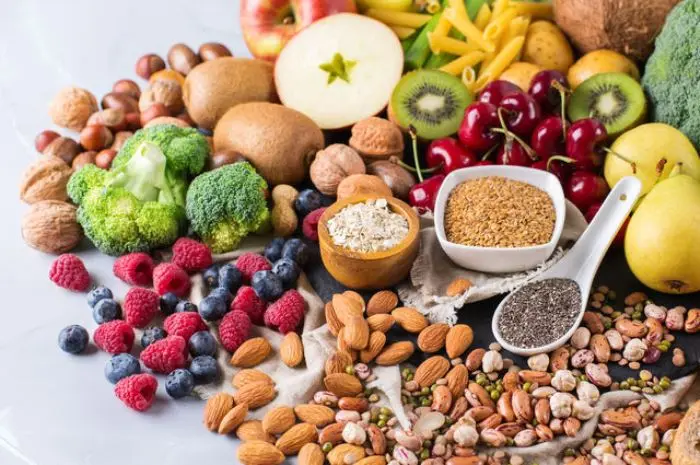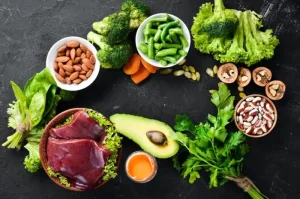Preventing cancer is a significant health goal, and one way to contribute to this goal is by incorporating anthocyanin-rich fruits and vegetables into your diet. Anthocyanins are natural plant compounds responsible for the vibrant red, purple, and blue colors found in many foods.
These compounds have gained attention in recent years for their potential health benefits, including their role in cancer prevention. In this comprehensive guide, we will explore the link between anthocyanins in fruits and vegetables and their potential in reducing the risk of cancer.
Understanding Anthocyanins
Anthocyanins are a subgroup of flavonoids, which are powerful antioxidants found in plant-based foods. They are responsible for the various colors in fruits and vegetables, such as blueberries, strawberries, cherries, grapes, red cabbage, and eggplants. These natural pigments are not only responsible for the appealing colors of these foods but also contribute to their health-promoting properties.
Cancer Prevention Properties of Anthocyanins
Research into the potential cancer-preventive properties of anthocyanins is ongoing, and while more studies are needed, existing evidence suggests several mechanisms by which these compounds may reduce the risk of cancer:
Antioxidant Activity
Anthocyanins possess strong antioxidant properties, which means they can help neutralize harmful free radicals in the body. Free radicals can damage cells and DNA, potentially leading to cancerous changes.
Anti-Inflammatory Effects
Chronic inflammation is linked to the development of cancer. Anthocyanins have demonstrated anti-inflammatory effects that may help reduce the risk of cancer.
Cell Cycle Regulation
Some studies suggest that anthocyanins can influence the regulation of cell cycles, preventing the uncontrolled growth of cancer cells.
Apoptosis Induction
Apoptosis is a process in which damaged or abnormal cells undergo programmed cell death. Anthocyanins may help promote apoptosis in cancerous cells, preventing their proliferation.
Fruits and Vegetables Rich in Anthocyanins
To incorporate anthocyanin-rich foods into your diet and potentially reduce the risk of cancer, consider adding the following fruits and vegetables to your meals:
Blueberries
These small berries are packed with anthocyanins and are easy to include in your diet by adding them to yogurt, cereal, smoothies, or enjoying them as a snack.
Strawberries
Strawberries are not only delicious but also contain significant amounts of anthocyanins. Enjoy them fresh, add them to salads, or use them in desserts.
Cherries
Both sweet and tart cherries are rich in anthocyanins. They can be consumed fresh or used in pies, jams, or as a topping for yogurt.
Blackberries
Blackberries are another excellent source of anthocyanins. They can be consumed on their own or added to various dishes and desserts.
Red Cabbage
This cruciferous vegetable contains anthocyanins responsible for its purple-red color. Incorporate red cabbage into coleslaw, salads, or stir-fries.
Purple Grapes
In addition to enjoying grapes as a snack, they are a source of anthocyanins used to make red wine.
Eggplants
This vegetable contains anthocyanins in its purple skin. Use eggplants in dishes like ratatouille, grilled vegetable platters, or eggplant parmesan.
Tips for Including Anthocyanins in Your Diet
To maximize the cancer-preventive potential of anthocyanins, consider the following tips:
Diverse Diet
Consume a variety of anthocyanin-rich fruits and vegetables to benefit from a wide range of health-promoting compounds.
Fresh and Frozen Options
While fresh produce is ideal, frozen berries and fruits are also good sources of anthocyanins, and they are convenient year-round.
Minimize Processing
Avoid highly processed foods that may contain artificial colorings and additives. Opt for whole, natural sources of anthocyanins.
Food Pairings
Combining anthocyanin-rich foods with other antioxidants, such as vitamin C from citrus fruits, can enhance their cancer-fighting effects.
Moderation
While anthocyanins offer potential health benefits, it’s important to maintain a balanced diet and lifestyle to reduce cancer risk holistically.
Consultation with a Healthcare Provider
While anthocyanins in fruits and vegetables show promise in cancer prevention, they are not a standalone solution. A balanced diet, regular exercise, and other healthy lifestyle choices are crucial for overall well-being and cancer risk reduction.
Before making significant dietary changes or supplements, consult with a healthcare provider for personalized guidance, especially if you have specific health concerns or medical conditions.
In conclusion. incorporating anthocyanin-rich fruits and vegetables into your diet can be a delicious and healthful way to reduce the risk of cancer. While more research is needed to fully understand the extent of their cancer-preventive properties,
The antioxidant and anti-inflammatory benefits of anthocyanins make them a valuable addition to a cancer-conscious diet. Alongside other healthy lifestyle choices, such as regular physical activity and avoiding tobacco and excessive alcohol consumption, a diet rich in colorful, natural foods can contribute to a lower risk of cancer and better overall health.










